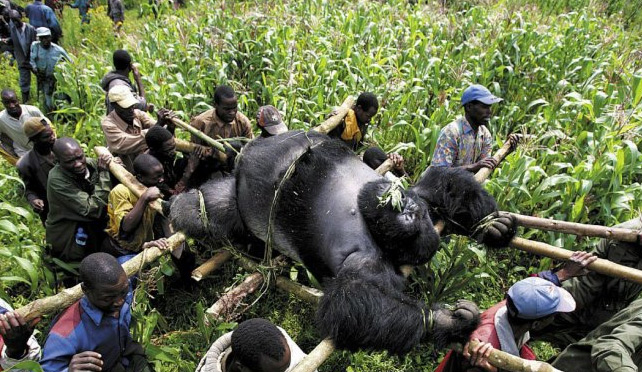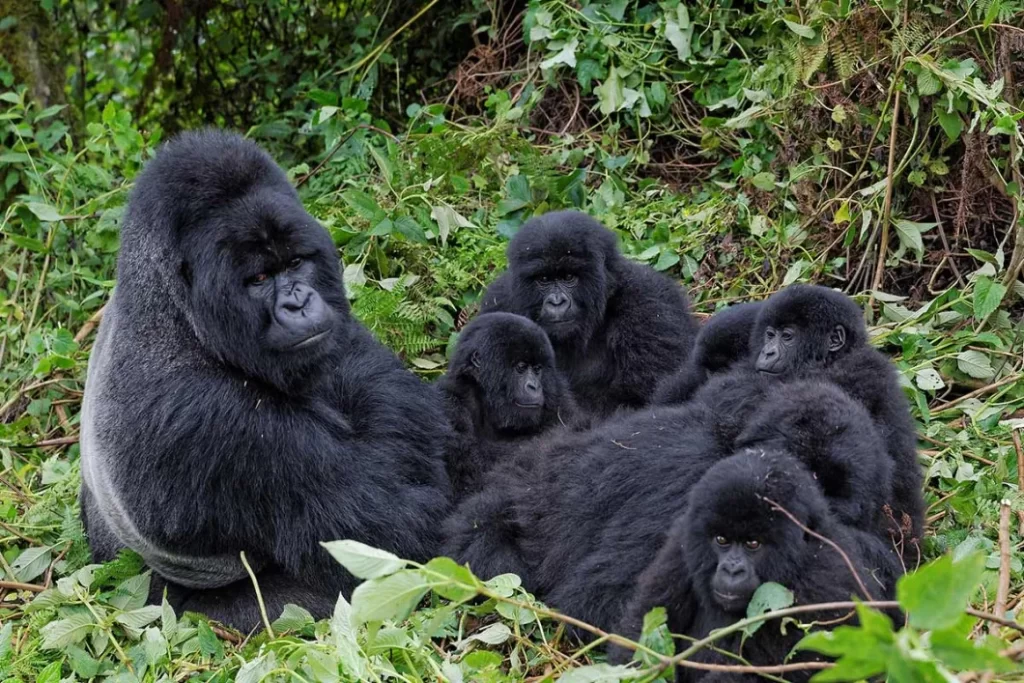Top Main Reasons Why Gorillas are Poached
Why Gorillas are Poached, the reasons for gorilla poaching have persisted for generations; nevertheless, it is only in the 20th and 21st centuries that such activities have escalated, leading to the serious endangerment and near extinction of mountain gorillas. In 2018, mountain gorillas were reclassified from severely endangered to endangered species status.
Gorillas are terrestrial apes that are herbivorous and reside in the most verdant jungles of Africa. Gorillas are classified into two species: the western gorilla (Gorilla gorilla) and the eastern gorilla (Gorilla beringei). The eastern gorillas are categorized into four subspecies: eastern lowland gorillas, western lowland gorillas, and the renowned mountain gorillas.

Mountain gorillas reside in the montane rainforests of the Albertine Rift, specifically inside the Virunga Conservation Area and Bwindi Impenetrable National Park in Uganda. The Virunga Conservation Area includes Virunga National Park in the Democratic Republic of the Congo, Volcanoes National Park in Rwanda, and Mgahinga Gorilla National Park in Uganda. These are the sole nations that harbor mountain gorillas in their indigenous environments. Lowland gorillas are observable in Virunga National Park and Kahuzi Biega National Park in the Congo. The western lowland gorillas are located in western African nations.
Over the years, gorillas have been extensively poached, bringing them perilously close to extinction. Gorillas are poached for numerous reasons, including food, the wild meat trade, private trophy collection, and traditional medicine.
One cause for the extensive poaching of gorillas is the demand for food. Numerous individuals illegally hunt these gorillas for sustenance to nourish themselves and their families. This practice is prevalent in Western Africa and the Congo. Additionally, insurgent factions who utilize the vast jungles as refuges pursue gorillas for sustenance.
Gorillas are illegally hunted for the bushmeat trade. The consumption of gorillas and other wild animals is prevalent, resulting in a significant demand for wild meat, particularly in metropolitan centers where the consumption of ape flesh is regarded as prestigious. Consequently, poachers pursue gorillas with the purpose of trading them for monetary gain or other goods. The trade in wild meat is a significant factor contributing to the poaching of gorillas, driven by substantial demand.
The poaching of gorillas is partly attributed to the traditional medicines and charms derived from their body parts.

Additionally, gorillas are subjected to poaching as certain individuals regard them as trophies to boast about. The demand for private trophy collections among individuals who perceive them as symbols of money and power is evident, particularly when featuring lifeless gorillas displayed on their walls. Some individuals desire them alive, resulting in their hunting and capture for companionship or zoological display. It should be mentioned that mountain gorillas cannot thrive in confinement; hence, those taken for zoos or as pets often perish due to environmental changes, as they only inhabit high-altitude regions.
The aforementioned are the predominant reasons for gorilla poaching. Despite gorillas constituting a minor fraction of global wildlife poaching, the repercussions are profoundly significant. This is due to the limited population of gorillas, their low birth rate, and extended gestation time.
Gorillas suffer multiple threats, including poaching, habitat loss, illnesses, and insecurity. Consequently, safeguarding them is crucial, and the relevant organizations tasked with the protection and conservation of gorillas are implementing measures such as establishing age restrictions for gorilla trekking, limiting the number of individuals trekking a single gorilla family to mitigate disease transmission, and training and deploying rangers for their protection, among various other initiatives. Acknowledgment is due to the gorilla conservation organizations for their commendable efforts.
Top Reasons Why Gorillas are Poached
The main Reasons for Gorilla Poaching: The hunting of gorillas constitutes a significant threat to their survival, rendering them an endangered species.
Approximately 900 mountain gorillas remain globally, distributed among Uganda, Rwanda, and the Democratic Republic of the Congo. Despite increased awareness for gorilla conservation, poaching remains a significant obstacle.
Gorillas in all three nations are under stringent government oversight to prevent their extinction. Nevertheless, despite all these measures, illicit hunting persists.
Numerous factors contribute to the poaching and killing of gorillas, as outlined here.
To market their meat.
Significant wildlife trade for bushmeat has occurred from West and Central Africa to Europe. Many individuals resort to killing animals such as gorillas to generate income due to extreme poverty in the region.
The government has attempted to allocate a portion of tourism revenues to the local population to incentivize the conservation of these gorillas.
African villagers may enjoy gorilla meat, but exporting it to countries such as the United States presents a more profitable opportunity. This is clearly prohibited; nonetheless, in certain peculiar circles, the consumption of such flesh may signify prestige.
For private collections or as trophies.
Many individuals retain deceased gorillas as souvenirs to display their affluence or dominance. There is no scientific or educational justification; rather, individuals desire them for reasons of pride.
Individuals kidnap gorillas and confine them in private zoos as pets. The gorillas ultimately perish as a result of the differing environments.
To sell off parts of their body.
Others hunt gorillas to retain their body parts or utilize them as medicinal remedies, as local witch doctors prescribe them for magical purposes. The efficacy has not been empirically verified, however.
The impact of poaching on all species and subspecies is substantial. The slaughter of mountain gorillas and Cross River gorillas is egregious due to their diminished populations, low reproductive rates, and severely restricted habitats.
